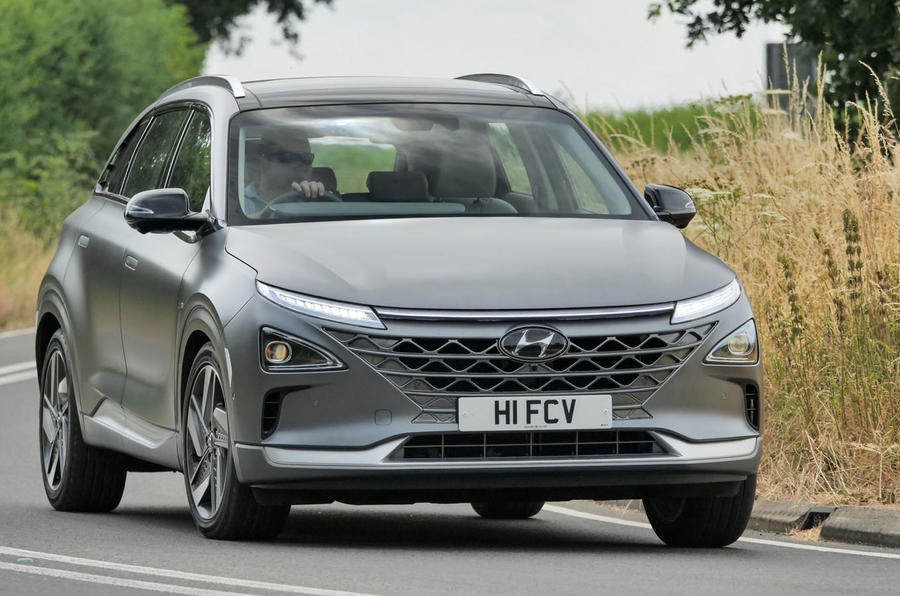What is it?
While most in the industry are harping on about electric vehicles, there’s another zero-emission revolution quietly happening in the background: that of hydrogen-powered cars.
There’s plenty of debate in both camps on which is actually the most environmentally friendly from well to wheel, but in the future, there’s every possibility that these two sustainable options for powering vehicles can co-exist, just like the fuels of today.
For now, there are two clear advantages on the practicality front for hydrogen fuel cell electric vehicles (FCEV). They have longer ranges than EVs, eradicating range anxiety, and refuelling can only take five minutes. By comparison, a decent charge for an EV on the go will take the best part of an hour.
But then of course, there’s the infrastructure. There are 16,000 EV public charging points in the UK. There are 11 hydrogen refuelling stations. Need we say more? There are plans to have 65 stations by 2030, but for now, this limitation – and the expense of the cars in the first place - means hydrogen cars are only viable for a precious few.
Hyundai has been at the forefront of hydrogen vehicle development, starting research in 1998, it claims. There was a Tucson-based prototype in 2007 and then, in 2014, a hydrogen variant of its ix35 SUV arrived, which laid claim to being the first so-called ‘mass production’ hydrogen car.
There are now 500 of these cars in Europe, of which 17 made it to the UK. We even ran a long-term hydrogen ix35 to find out how realistic it was to live with.
The Nexo replaces the ix35, and is built from the ground up as an FCEV. Compared to the ix35, the fuel cell technology is smaller, lighter and stronger, refuelling times are shorter and the air supply system is improved. It has 414 miles of range on a WLTP cycle and takes five minutes to refuel.
Hyundai calls the Nexo its “technological flagship” and to this end, has made sure technology extends far beyond just the hydrogen fuel cell. It has a blind spot view monitor which shows drivers on a central screen the rear left, right and side views of the Nexo using cameras while changing lanes as well as Remote Smart Parking Assist, which enables the Nexo to park itself or retrieve itself from a parking space without a driver in the car.
The model is capable of Level 4 autonomous driving, which means it can self-drive in all but the most complex driving scenarios, and was tested in South Korea where it completed a 118-mile run. However, this technology won’t be fitted to the production models given that legislation does not yet allow for that level of autonomy.
It’s also safe, recently becoming the first hydrogen fuel cell electric vehicle to score a maximum five-star Euro NCAP safety rating.
Given the issues we’ve highlighted surrounding hydrogen, it’s unsurprising there are few competitors to the Nexo. The £66,000 Toyota Mirai is the only other hydrogen car on sale in the UK, while there are no plans to bring the Honda Clarity FCV to the UK despite it being on sale elsewhere.








































Join the debate
Add your comment
I don't get all the interest
I don't get all the interest in hydrogen. It is mainly produced from gas (48%), Oil (30%) and coal (18%) in a complicated chemical process. If we wanted an easy storable gas powered car we should all convert to LPG!
For the doubters you should put 'hydrogen production' in your search engine!!!
Antivirus Software Services
Points you raised very valid points in your auto car post. It really happened some person do not have the right idea. But with your awesome tips, one can easily identify it. You should check the PC problem suffering from the virus than just contact our experts through McAfee Uninstall
The way forward?
So at present it looks like hydrogen will be greener long term.
All it needs for hydrogen to become a realistic alternative is for the current petrol / diesel filling station operators to work in cooperation with the motor manufacturers to ensure that they roll out the infrastructure and availability of the cars at the same time.
It's in the oil companies interests to ensure that they have a long term future use of their filling stations.
But the real question is what is the environmental impact when these cars reach the scrap yards in 10 to 15 years?
Has anyone done any serious research to suggest if one technology is better than the other to dispose of?
Perhaps it shouldn't be just about what resources are used to create and run the cars, but also about what will be used in safely disposing / recycling them at the end of their use as well. Are fuel cells better or worse than batteries?
We don't want to be creating large scale problems for the next generation.